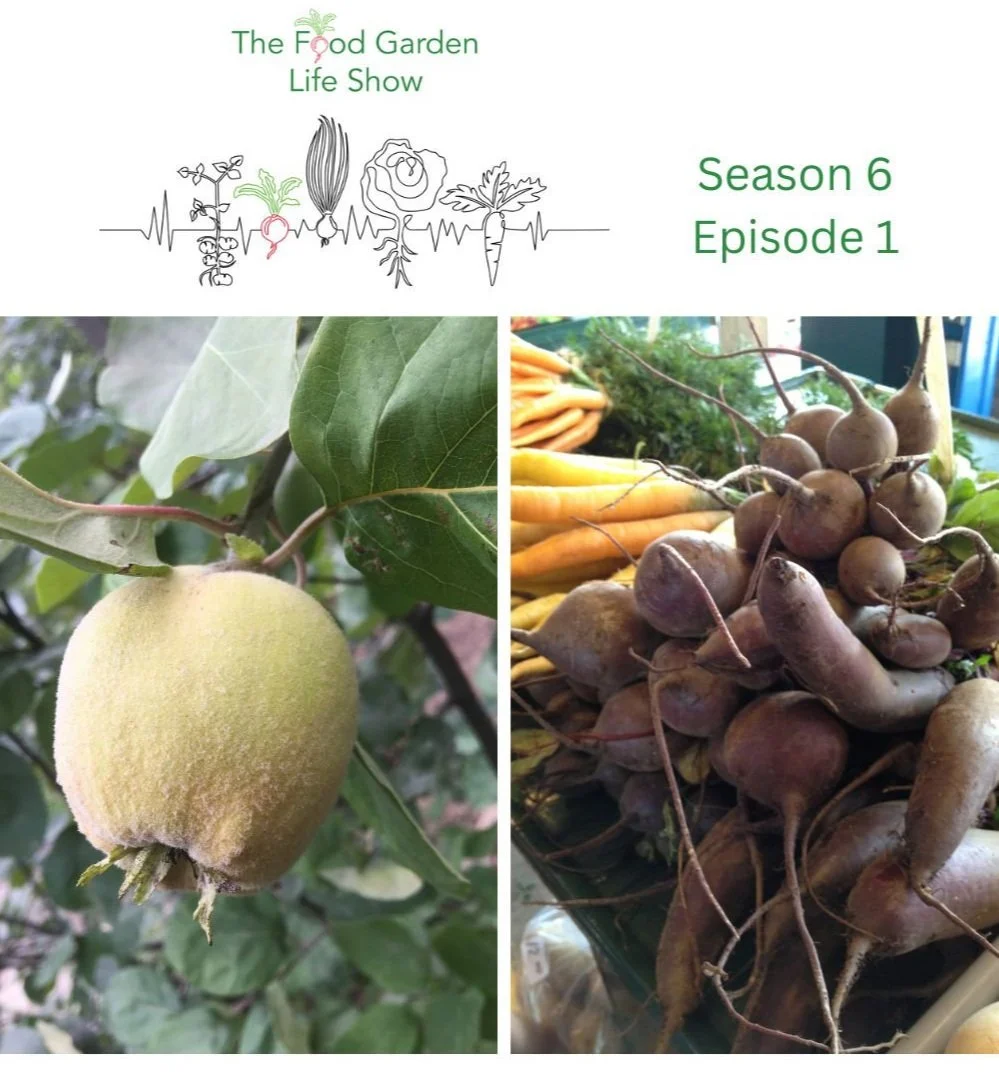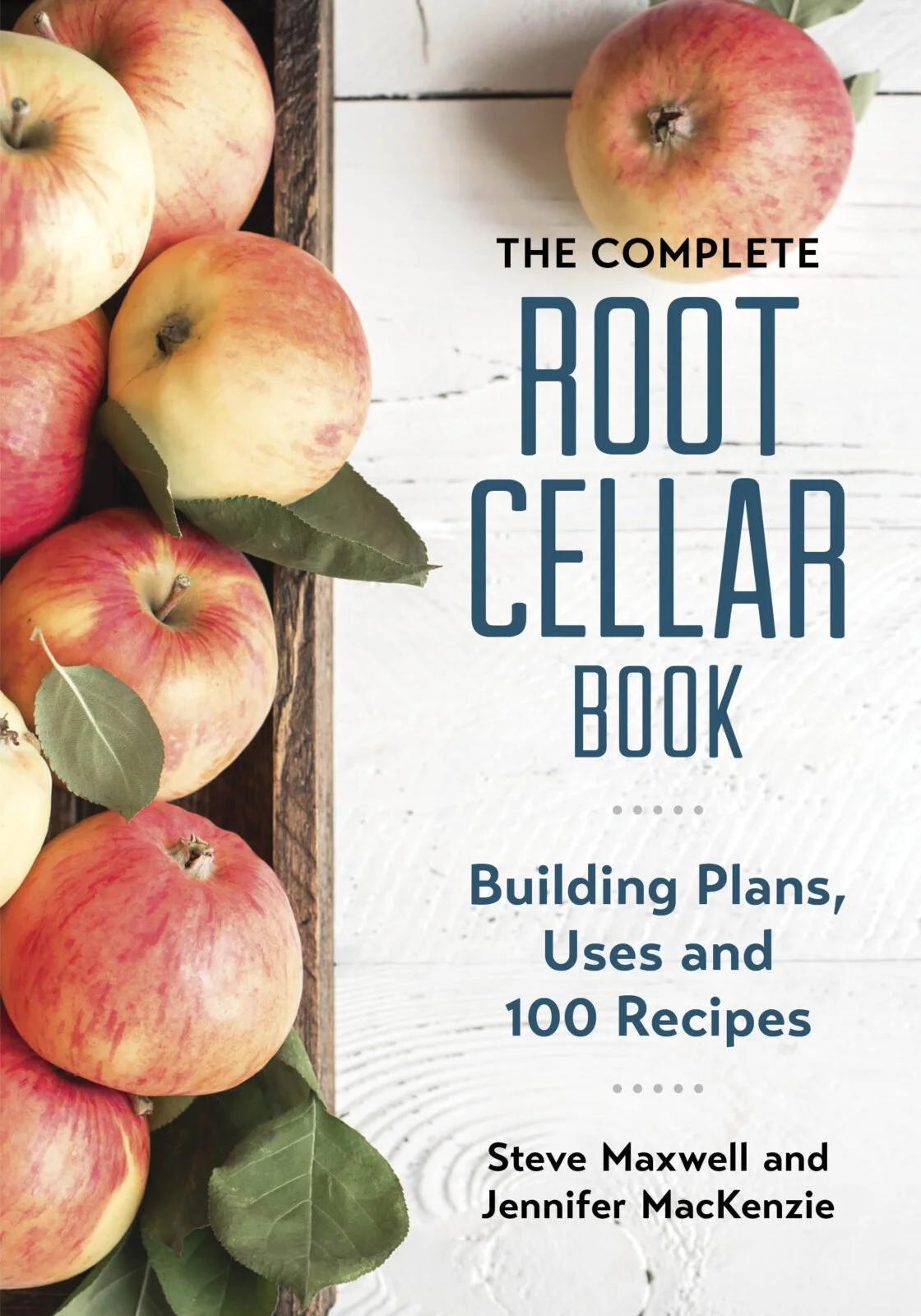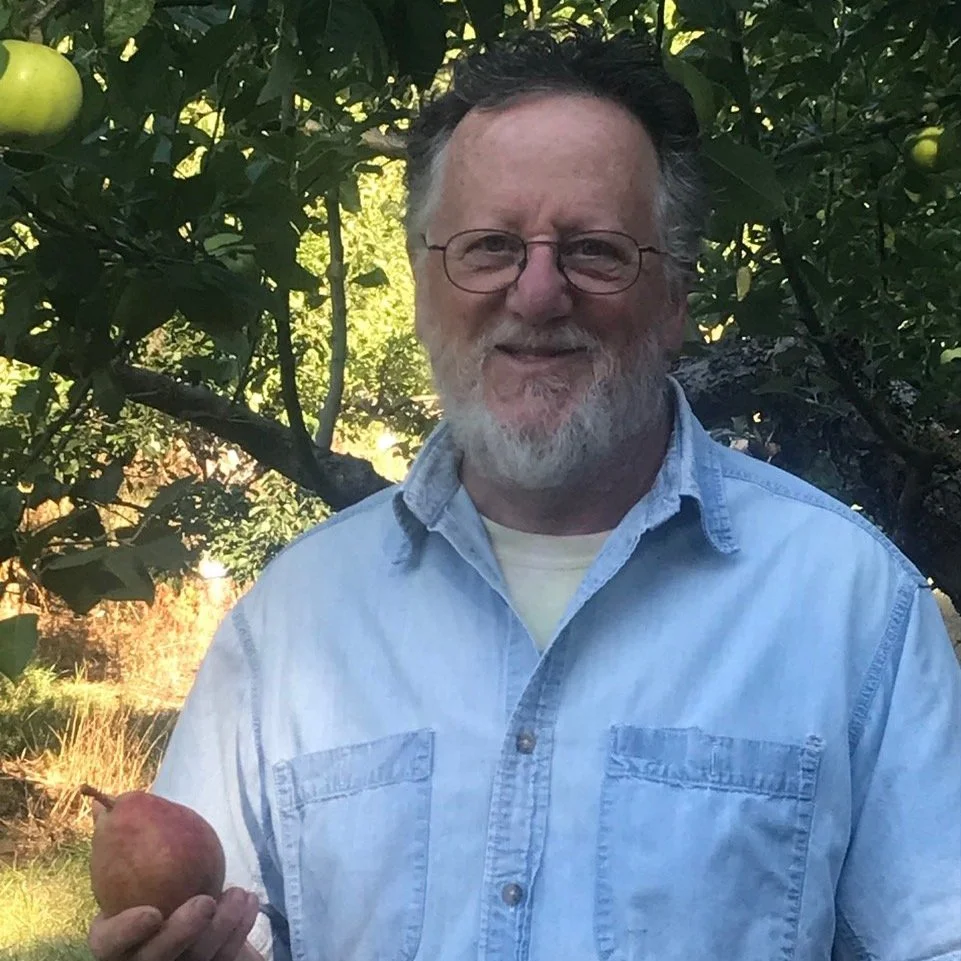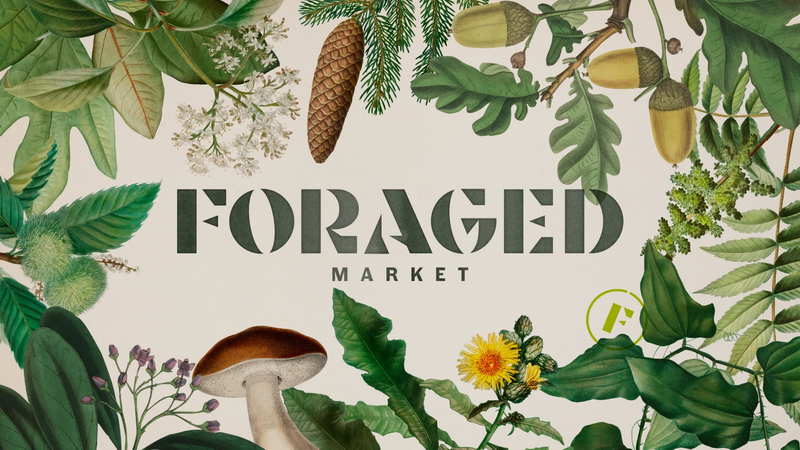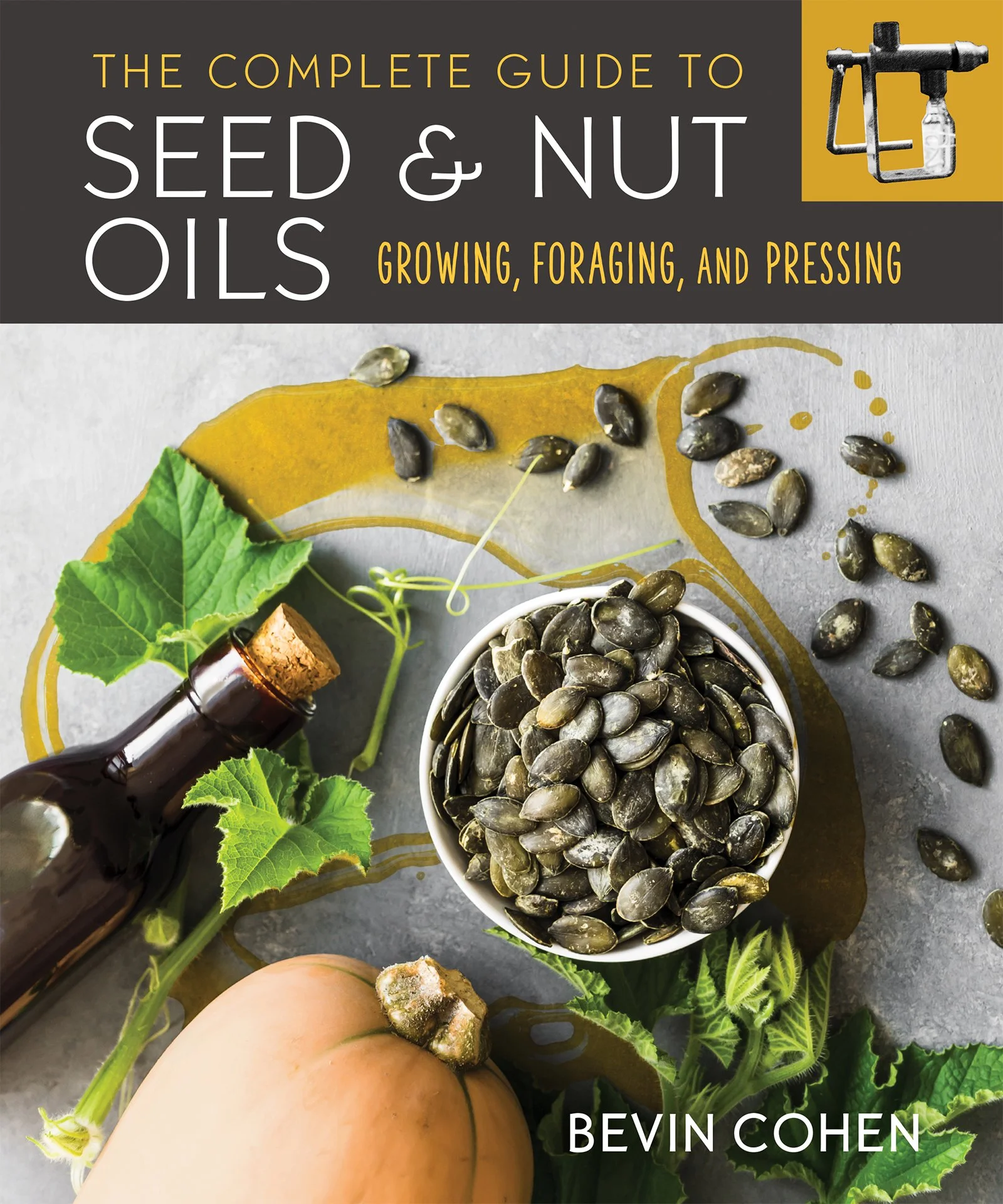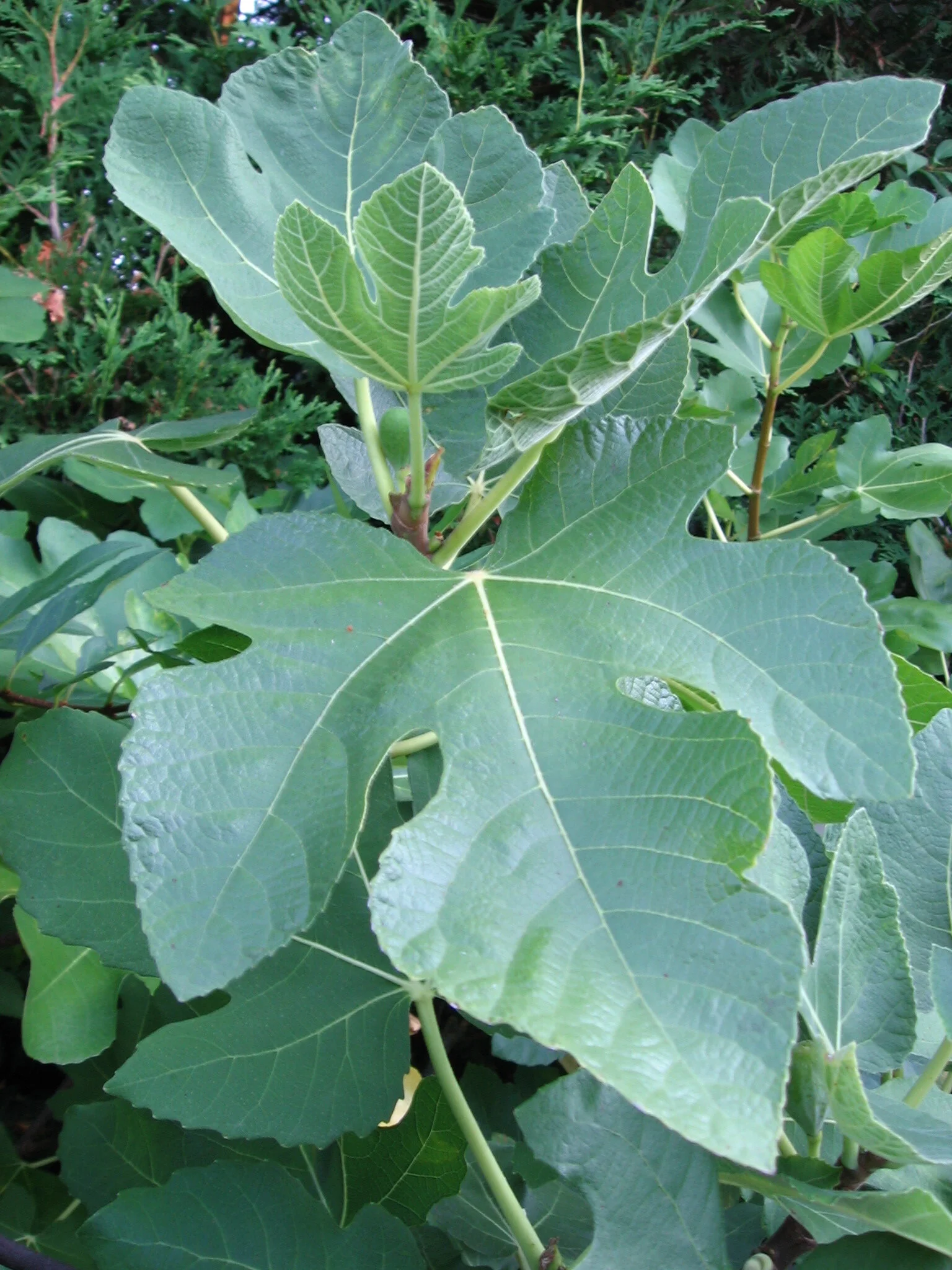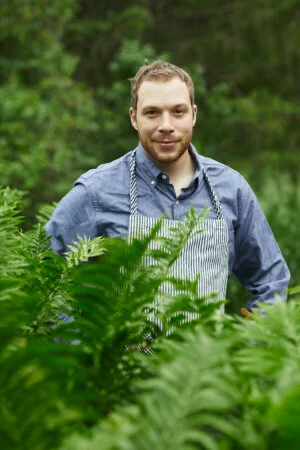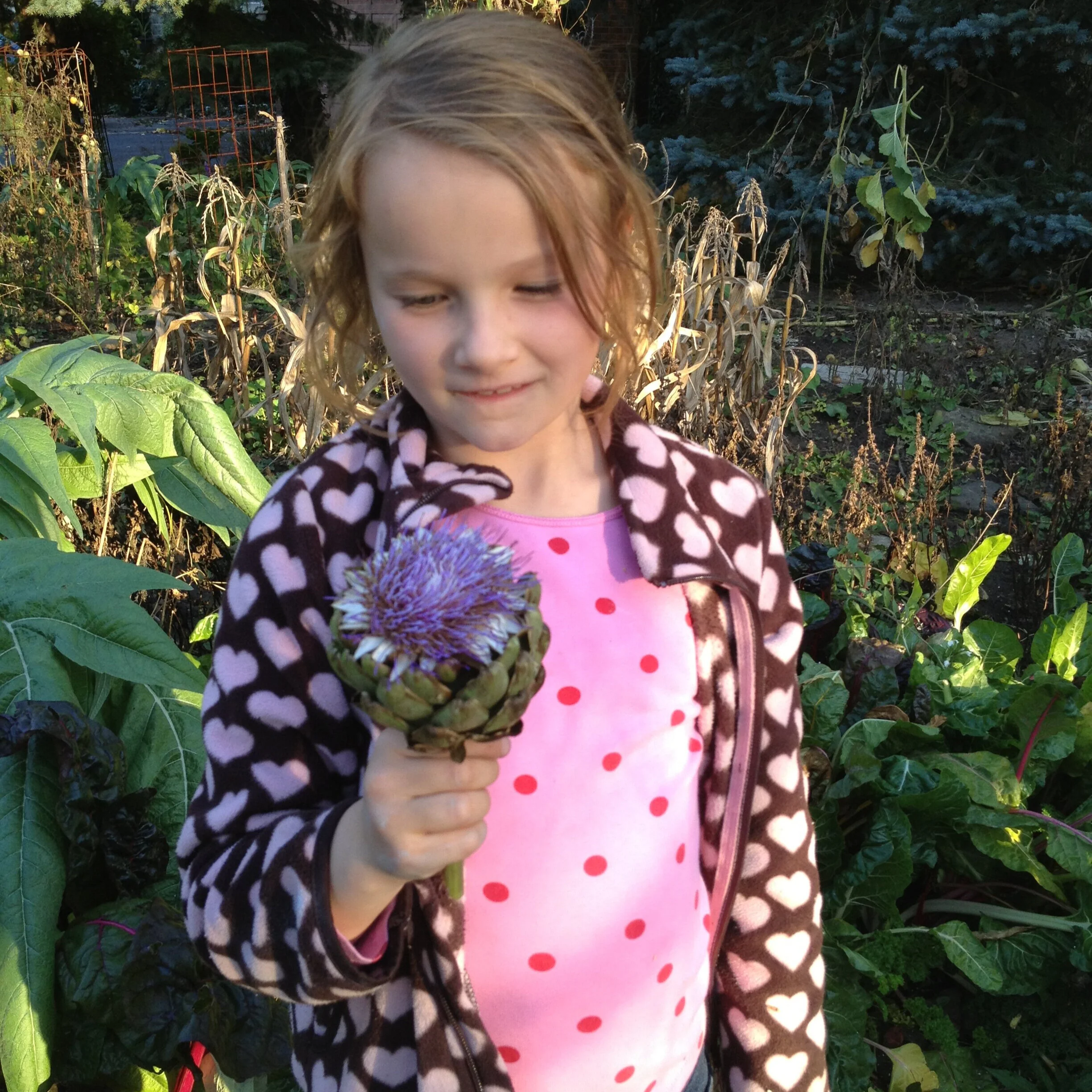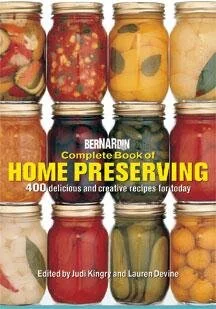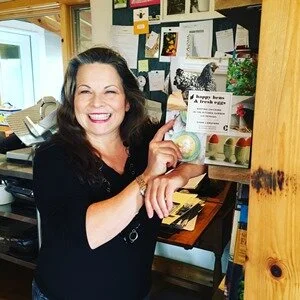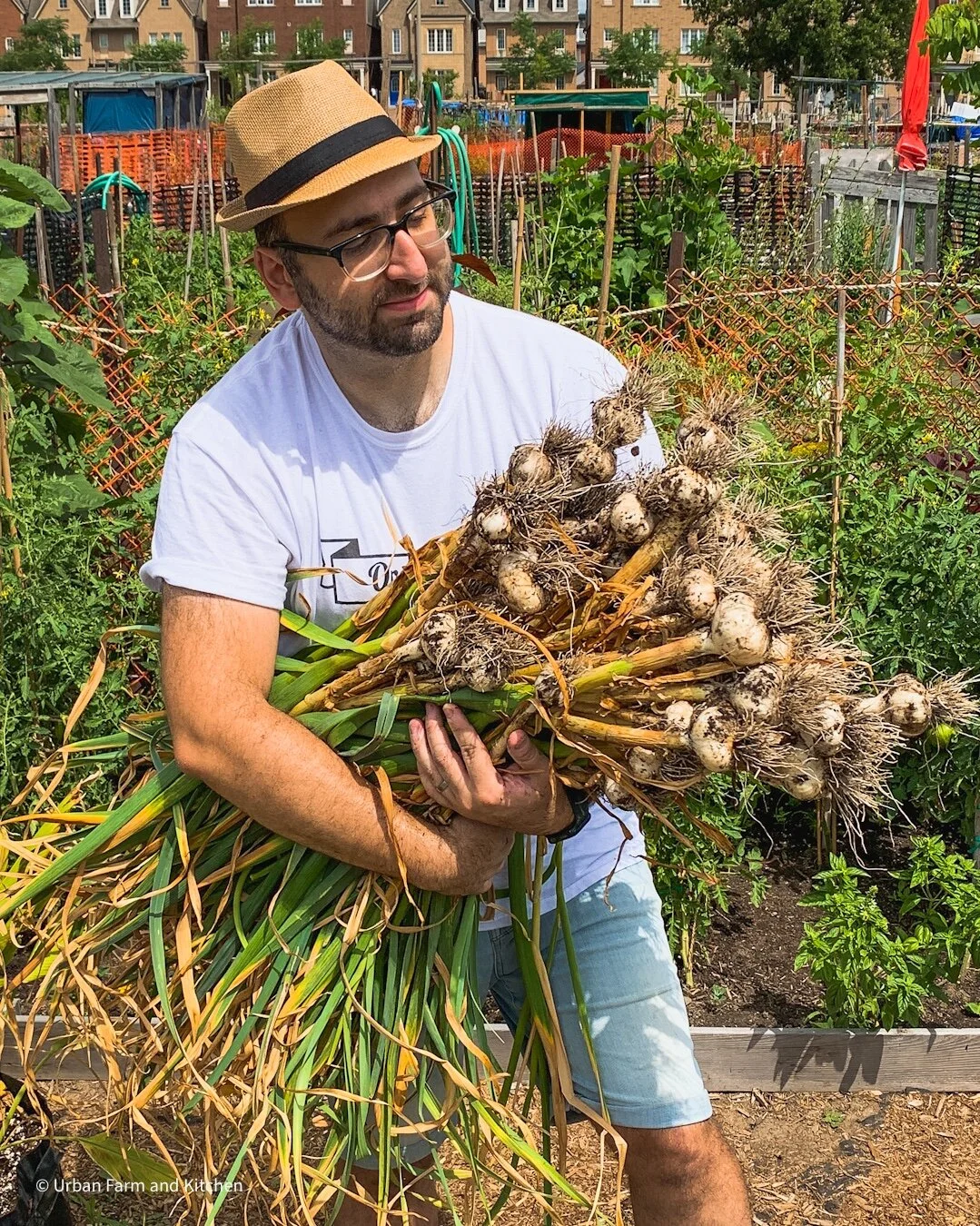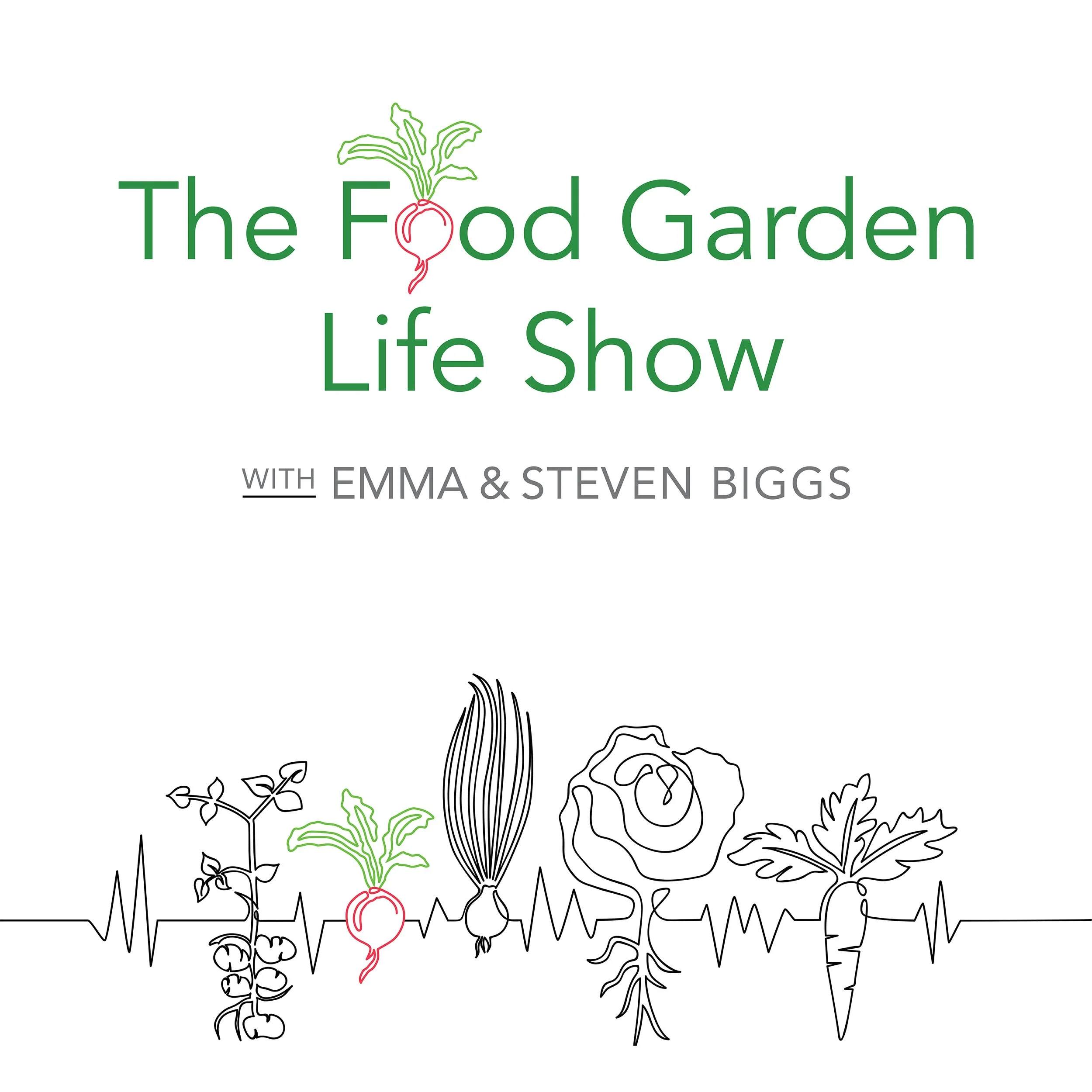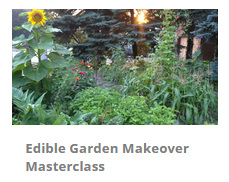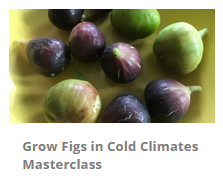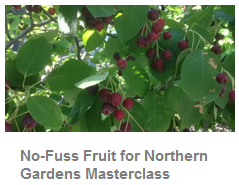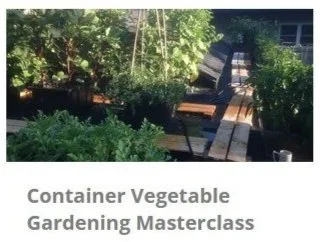Grow Quince + Delectable Root Veg Recipes
We talk about growing quince with Joseph Postman; and talk about cooking root vegetables with Jennifer MacKenzie, who shares recipes from her book The Complete Root Cellar Book.
Spoiler alert: Scroll down for recipes!
Growing Quince
Quince expert Joseph Postman joins us to talk about quince. This fragrant fruit is unknown to many in North America, and often relegated to use as a rootstock for pear trees.
Postman is a retired plant pathologist and curator of the USDA National Clonal Germplasm Repository in Corvallis, Oregon, where he helped develop a pear collection with cultivars and species from around the world.
We talk about:
What is quince
How to use quince fruit
The use of quince trees as rootstock for pear trees
Quince varieties
Quince cold hardiness
Quince diseases
Delectable Root Vegetable Recipes
Cookbook author and professional home economist Jennifer MacKenzie joins us to talk about cooking root vegetables and shares recipes from her book The Complete Root Cellar Book.
We talk about:
Shopping for root veg
What to look for if you're planning to store root veg
Spiced roasted turnip and beet batons
Beet and carrot slaw
Root cellar medley soup
Parsnip and pear soup
MacKenzie is the author of 9 cookbooks.
Sous Vide Basics
150 Best Waffle Maker Recipes
The Complete Book of Pickling
The Dehydrator Bible
The Complete Trail Food Cookbook
The Complete Root Cellar Book
Complete Curry Cookbook
Best of Bridge Home Preserving
Recipes from The Complete Root Cellar Book
Parsnip and Pear Soup
From The Complete Root Cellar Book by Steve Maxwell and Jennifer MacKenzie (Robert Rose 2010); used with permission.
The sweet, floral flavor of pears tames the stronger flavor of parsnips in this light and velvety soup.
Makes 4 to 6 servings
1 tbsp (15 mL) vegetable oil
1/2 cup (125 mL) chopped shallots
2 pears, peeled and chopped
1 small all-purpose potato, peeled and chopped
4 cups (1 L) chopped parsnips (6 to 10)
4 cups (1 L) homemade vegetable stock or chicken stock, or reduced-sodium ready-to-use vegetable or chicken broth
1 tbsp (15 mL) white wine vinegar
1 tsp (5 mL) salt, or to taste
1/2 tsp (2 mL) freshly ground black pepper, or to taste
Chopped fresh parsley
1. In a large pot, heat oil over medium heat. Add shallots and sauté for about 3 minutes or until starting to soften. Add pears, potato and parsnips; sauté for 5 minutes or until parsnips start to soften.
2. Add stock and bring to a boil over medium-high heat. Reduce heat to medium-low, cover and simmer for about 20 minutes or until vegetables are very soft.
3. Using an immersion blender in pot or transferring soup in batches to an upright blender, purée until very smooth. Return to pot, if necessary.
4. Add water or more stock to thin to desired consistency. Reheat over medium heat until steaming, stirring often. Stir in vinegar. Season with salt and pepper.
5. Ladle into warmed bowls and serve sprinkled with parsley.
Tips: If your parsnips have tough, woody cores, trim them away when chopping; they’ll cause your soup to be stringy.
To dress up this soup for entertaining, float a spiced pear crisp (see page 138 of the book for the recipe) on each serving.
Spice-Roasted Turnip and Beet Batons
From The Complete Root Cellar Book by Steve Maxwell and Jennifer MacKenzie (Robert Rose 2010); used with permission.
Change up your traditional vegetable side dishes by adding a dash of spice and roasting them instead of boiling, and you’ll think you’re eating an entirely new food.
Makes 4 to 6 servings
Preheat oven to 400F (200C)
Large rimmed baking sheet, lined with foil
Ingredients
3 large turnips (about 1 lb/500 g)
2 large beets (about 1 lb/500 g)
2 tbsp (30 mL) olive oil
1/2 tsp (2 mL) curry powder
1/2 tsp (2 mL) ground cumin
1/2 tsp (2 mL) ground coriander
1/8 tsp (0.5 mL) cayenne pepper
Sea salt and freshly ground black pepper
1. Peel turnips and rinse. Trim off leaf stalks from beets (reserving for another use if desired) and trim off long roots. Peel beets and rinse. Cut turnips and beets lengthwise into sticks about 1/2-inch (1 cm) square.
2. On prepared baking sheet, toss turnips and beets with oil, curry powder, cumin, coriander and cayenne. Season to taste with salt and black pepper. Spread out as much as possible. Bake in preheated oven for about 50 minutes, flipping halfway through, or until vegetables are tender and browned. Season to taste with salt and black pepper. Transfer to a warmed serving dish.
Tip: A sharp Y-shaped vegetable peeler is very helpful when you’re peeling hard root vegetables, such as turnips and beets. If your peeler seems to be dragging the skin rather than neatly peeling it off, it’s probably time to invest in a new one.
More on Quince
Here are more interviews about quince.
More on Root Cellars
Here are more interviews about root Cellars.
Meet Canada's Grape
Daniel Speck from Henry of Pelham winery talks about how to grow grapes, European wine grapes, North American labrusca grapes—and hybrid grapes.
Growing Grapes and Making Wine in Niagara
Daniel Speck from Henry of Pelham winery talks about growing grapes, wine, and different types of wine grapes.
Daniel Speck from Henry of Pelham winery talks about growing grapes, wine, and different types of wine grapes.
We talk about:
What makes Niagara an excellent grape-growing region
Grape vine care
Vinifera grapes, labrusca grapes, and hybrid grapes
The history of the Henry of Pelham
Baco Noir and Pinot Noir grapes
Food pairings for Baco Noir wine
“Baco is Canada’s Grape!”
Matthew, Paul, and Daniel Speck
Connect
Henry of Pelham Winery: henryofpelham.com
Want More Interesting Drink Ideas?
If this episode got you thinking about fun drinks to serve over the holidays, tune in to the episode entitled, Garlic-Infused Vodka and a Cricket Rodeo, where Peter McClusky from the Toronto Garlic Festival tells us about garlic-infused vodka.
Interested in Growing Fruit?
Check out these articles about growing fruit in cold climates.
Grow Spices + How to Store Food
In this episode: Grow your own spices with Tasha Greer, and food storage and preservation with Steve Maxwell.
Talking about growing spices with Tasha Greer, author of Grow Your Own Spices.
Grow Your Own Spices
In the first part of the show, we chat with Tasha Greer about how to grow your own spices. She’s the author of the book Grow Your Own Spices.
We chat about:
The difference between a herb and a spice
Spice-growing ideas for this time of year
Seed-grown spices
“Underground” spices
Spices that might already be in your landscape
Spices that a patio gardener can grow in containers and overwinter indoors
Feed Yourself for a Year
Homesteader, cold cellar, and food storage expert Steve Maxwell talks about food storage.
In the second part of the show we talk with homesteader, cold-cellar, and food-storage expert Steve Maxwell for ideas about food storage – even if you’re an urban dweller. He’s the creator of the online course Feed Yourself for a Year: Select & Store 365 Days of Food.
He talks about:
The reason for having a supply of stored food
The advantage of preserving your own food vs. kits
Ideas for urban dwellers to store food
The importance of stored water
Making basement root cellars
Making a roothouse
Smoking food
Garlic-Infused Vodka and a Cricket Rodeo
In this episode: Growing and cooking garlic, and the Toronto Garlic Festival with Peter McClusky, and chicken-keeping tips and ideas from Frank Hyman, author of Hentopia.
Talking about growing and cooking with garlic, with Peter McClusky, founder of The Toronto Garlic Festival.
Toronto Garlic Festival
In the first part of the show, we chat with Peter McClusky about garlic. He’s the founder of the Toronto Garlic Festival, now in its 12th year.
We chat about:
The hardneck garlic grown in Ontario, and it’s culinary properties
How to grow garlic at home
The festival, which includes seed garlic, prepared food, educational events, and music.
The festival is Sunday, September 25, 2022 at Wychwood Barns, 601 Christie St. here in Toronto.
Backyard Hens get Hentopia
Frank Hyman, author of Hentopia, talks about backyard hens.
In the second part of the show we talk about backyard hens with Frank Hyman, author of the book Hentopia.
Hyman’s approach to keeping chickens is that he aims to spend less time doing chicken-related chores than cooking eggs. And he sets up the coop so that he can go away for a couple of weeks at a time.
He tells us about:
Practical feed and feeder ideas
Creating practical water dispensers — even in cold climates
Making a pallet coop
(Spoiler alert: we hear about the cricket rodeo he gives his hens)
Trailer Video for Hentopia
Recipes in Bloom
Denise Schreiber, author of Eat Your Roses, tells us about edible flowers and shares recipe ideas, including rose-petal ice cream, roasted-red-pepper soup with nasturtiums, and lavender-flower biscotti.
Ice Cream, Sliders, Soups, and More with Edible Flowers
Denise Schreiber, author of Eat Your Roses, talks about edible flowers.
We chat with Pittsburgh author and horticulturist Denise Schreiber about edible flowers.
Schreiber is the author of the book Eat Your Roses.
We talk about:
Common edible flowers
Lesser-known edible flowers
Top tips for edible flowers
Edible-flower recipes, including rose-petal ice cream, pork sliders with nasturtium, roasted-red-pepper soup with nasturtium, lavender-flower biscotti
Seasonal Garden Tips + Wild and Specialty Foods
In this episode: Seasonal tips with Joanne Shaw and Matthew Dressing; and foraging and specialty foods with Jack Hamrick.
Talking about seasonal gardening activities with Joanne Shaw and Matthew Dressing from Down the Garden Path.
Summer in the Garden
In the first part of the show, we chat with landscape designers Joanne Shaw and Matthew Dressing, hosts of the Down the Garden Path radio show and podcast.
We talk about:
Seasonal gardening tips
What to do in the garden now
Their new book, Down the Garden Path
Foraged
In the second part of the show we talk about unique foods, foraging, and turning your passion into a career with Jack Hamrick from Foraged.
Jack Hamrick from Foraged talks about specialty foods and connecting foragers and specialty producers with consumers.
He tells us about:
How a chat with a forager and some Chicken of the Woods mushrooms set him on the path to creating an online marketplace for foraged and specialty foods
The journey of building a business
Top tips to get started with a food business
Unique foods he loves on Foraged
Press Seed and Nut Oils at Home
Bevin Cohen talks about how to press your own seed and nut oils.
Bevin Cohen from Small House Farm talks about how to make your own seed and nut oils.
Make Seed and Nut Oils at Home
Our guest today makes oils from a wide range of nuts and seeds.
Bevin Cohen runs Small House Farm in Michigan, where he specializes in oils, seeds, and cosmetics.
Home Oil Pressing
Cohen says home oil pressing gives fresh oil with superior flavour to oils that are mass produced.
He explains how to press small batches of oil at home.
Oil Seeds for Northern Gardeners
In this episode, Cohen talks about how to press oil from:
Flax
Hemp
Walnut
Pumpkin
Black currant
Borage
Watermelon
The Whole Nut or Seed
Leftovers from oil production of some seeds provides “seed cake” that can be used for cooking. Examples are pumpkin seed cake and walnut seed cake.
Shelling Tip
Trying to sort black walnut shell from nut pieces? Put them in water.
Shell fragments float, while the nut meat sinks.
Book about Seed and Nut Oils
Bevin Cohen’s new book, The Complete Guide to Seed & Nut Oils.
How to Use Fig Leaves in the Kitchen
Chef David Salt talks about how to use fig leaves in the kitchen.
Chef David Salt explains how to cook with fig leaves. Salt’s restaurant is Drifter’s Solace.
Coconut. Almond. Green fig.
These are some of the flavours people use to describe what they taste when Chef David Salt serves something flavoured with fig leaves.
Salt cooked with fig leaves in London, England, where he had a ready source of fig leaves in a nearby churchyard.
Upon relocating to Toronto, he didn’t know where to find them.
And that’s when host Steven Biggs received an enquiry that read:
“I am looking for fig leaves to make dishes with at my restaurant (fig leaf ice cream, jelly, savoury sauces, custards etc.) Is there any possibility of getting some from you, before they fall for the winter?”
Salt got some fig leaves, and invited Biggs to the restaurant to taste his fig-leaf ice cream, fig-leaf cheese—and a fig leaf grappa!
Cooking with Fig Leaves
Salt says that the most classic method of using fig leaves is in the same way as banana leaves — as a wrap. When used as a wrap, they protect the enclosed meat or fish, keeping it moist. They also impart a unique flavour.
When cooking with fig leaves, the leaf is used to wrap food, or an infusion used to pull out the fig-leaf flavour.
The flavour is delicate. Salt finds it pairs well with light-flavoured meats or fish; and light-flavoured fruit such as strawberries and blueberries.
But he says to be creative: He’s paired fig leaves with hot chocolate, a strong taste, and found worked well.
His favourite dish made using fig leaves is ice cream.
For people using fig leaves for the first time, he explains that heat can help to bring out the flavour—but to avoid boiling, which results in a stewed-vegetable flavour. When time permits, a cold infusion is best.
Drifter’s Solace
Salt is gearing up to create fig-leaf flavoured foods this fall at his brand new chef’s-table style restaurant in Toronto. It’s called Drifter’s Solace.
Toronto has lots of big restaurants. Drifters Solace is at the opposite end of the spectrum: It’s small and personal, for groups of 6-8 people.
Sochan, Galinsoga, Squash Tips: Root-to-Flower Cuisine
Chef Alan Bergo talks about root-to-flower cooking and foraged ingredients.
Chef Alan Bergo talks about root-to-flower cuisine, foraging, and some unexpected flavours.
Our guest today, Chef Alan Bergo, looks at vegetables through the eyes of a forager. He’s passionate about using parts of the plant that are often overlooked.
Chefs using a whole animals might use the term nose-to-tail cooking. Bergo takes this approach with his vegetables, using a root-to-flower approach.
Bergo is the author of the new book, The Forager Chef’s Book of Flora: Recipes and Techniques for Edible Plants from Garden, Field, and Forest.
Often-Forgotten Plant Parts
Bergo talks about using squash tips in the kitchen. “The squash is a perfect example of how foraging and looking for different ingredients changed how I consider vegetables that I thought I knew,” he says.
His advice for cooking squash shoot tips? Cook gently and delicately. Steam them, or blanch for one minute…or barely wilt them in a pan.
Other often-forgotten plant parts include:
Fennel fronds. Bergo likes to combine these with parmesan cheese and bread crumbs to make into cakes.
Carrot leaves. He suggests simmering them in salted water. They keep their shape and texture when gently cooked, and can then be used like salad.
Unripe sunflower heads. They have the texture of an artichoke along with a strong sunflower flavour.
Foraged Ingredients
Sochan. Bergo explains that leaves from this rudbeckia family member can be harvest three to four times over a year. The leaves formed after the flower stalk dies back are different—and are his favourite. Older leaves have a stronger flavour.
Nettles. He finds that common nettle has more of a “saline” or “oceanic” taste than Canada nettle.
Milkweed flowers can be used to make drinks with an intensely fruity flavour.
Meadowsweet flowers have an almond-like taste. Bergo says that a good way to catch floral aromas is by using cream.
Black walnut. Young nuts can be used to make a jam and ketchup.
Pine pollen. It’s used in China and the Middle East to make sweets.
Thoughts on Flavour
Bergo talks about flavours that are shared amongst plants in the same families, recounting the time he served dolmas made using galinsoga leaves, only to have people ask him if they contained artichoke.
Another example of a shared flavour is the hint of almond that shines through in plum-kernal oil or Saskatoon berries.
Bergo’s Top Tips
Steaming greens keeps more flavour than blanching.
Try something new!
Home and Community Cold Cellars
What’s old is new: Cold cellars are back. Transition Guelph launches an initiative to build local food-storage capacity through cold cellar education and installations. We find out what they’re doing—and get tips to help you make a home cold cellars.
What’s old is new: Cold cellars are back.
Transition Guelph launches an initiative to build local food-storage capacity through cold cellar education and installations.
We find out what they’re doing—and get tips to help you make a home cold cellars.
We are joined by Steve Tedesco and Ian Findlay from Transition Guelph. Tedesco is a Guelph-area farmer, and Findlay is a contractor specializing in cold cellars.
Why Cold Cellars are Back
Findlay says to think of a cold cellar as a passively-chilled walk-in cooler. He says people with the added food-storage capacity of a cold cellar can store more homegrown produce, and can also stock up on locally grown produce when it is in season.
Tedesco points out that having a cold cellar can change the way meals are planned. “It becomes an active participation sport to manage your cold room and plan your meals around what you have so that nothing goes to waste,” he says.
The Transition Movement
Tedesco explains that the Transition Movement is a global movement focused on building local resilience. Transition Guelph formed in 2009.
Transition chapters undertake projects that strengthen community resilience in six areas:
Food and water
Energy
Environmental stewardship
Economic vitality
Equity in a community
Community engagement
Home Cold Cellars
Findlay suggests spending time to understand 3 key elements to a successful home cold storage.
Ventilation to supply fresh air and exhaust warmer, moist air
Temperature control (the ideal temperature range is 2-5°C)
Humidity (many root vegetables store best in high humidity)
Tedesco and Findlay are finding that many of the newer homes in the Guelph area have a small space under the front porch that is well suited to making into a cold cellar.
Besides making a cold storage under a porch, other approaches include:
Partitioning off an area in the basement
Creating a stand-along cold cellar in a hillside (Findlay talks about concrete bunkers)
A trench storage in garden
Findlay says, “With enough ingenuity and sweat equity you can make any space work.”
Cultivate a Taste for Bitter Foods...and Cardoon Plants
Toronto chef and author Jennifer McLagan talks about how to cook bitter foods such as cardoon plants. Photo by Shane Reid.
Chef and author Jennifer McLagan joins us to talk about bitter foods, explaining what bitterness is, and how to effectively use bitter in the kitchen.
McLagan is the author of the book, Bitter: A Taste of the World’s most Dangerous Flavor, with Recipes.
The Loss of Bitter
McLagan recalls the grapefruit that her mother served her as a child. They had a slight bitterness—an “edge.” Her mother balanced that bitterness with a sprinkle of sugar on top.
McLagan says bitterness has been bred out of modern grapefruit. Now they’re sweet and pink…with no bitterness.
That loss inspired her book. “They don’t taste like grapefruit any more,” she says.
What is Bitter?
McLagan says that many people confuse bitter with sour. It is different from sour—one of the four basic tastes, along with sour, sweet, and salty.
“It adds a complexity and depth to the food,” says McLagan, explaining that using bitterness—like salt—makes food more interesting and less flat.
Cardoon plants are one of the bitter foods in Jennifer McLagan’s book, Bitter
She gives the example of crème brulée: The caramel topping has a bitter edge, which plays well with the sweet, rich pudding below.
Cooking with Bitter Foods
McLagan says that bitter is not as popular in North American cuisine as it is in other parts of the world. “The American palate is very geared towards sweet,” she explains.
Bitter pairs well with fat and with sweetness. “Bitter and fat are the two perfect things; one rounds out the other,” she says.
Here are ideas for using bitter in the kitchen:
McLagan talks about making turnip ice cream. She also suggests caramelizing turnips, which go well with baked apple or apple pie.
McLagan suggests cooking Belgian endive in butter (because fat and bitterness work well together) and then using that juice to make béchamel sauce, with added emmenthal cheese, to serve over top of the Belgian endives.
She has surprises in her book! There is a pannacotta with tobacco. McLagan says that small pieces of cigar give it a complex taste. A pannacotta is rich and creamy, and the bitterness from the tobacco comes through very gently at the back of the throat, making it a much more complex dish.
How to Cook Cardoon
For those who have never seen cardoon, McLagan describes it as “celery on steroids.” It has big, wide ribs. And it’s in the cover photo of her book.
The part of the plant that is eaten is the leaf rib. The rest of the leaf is discarded.
She describes it as having an artichoke-and-mushroom flavour—one that will seduce you once you appreciate the bitterness.
Here are McLagan’s tips for preparing and cooking cardoon:
Cut the cardoon stalks from the base.
Remove the spikes along the edge of the rib using a knife.
Next, remove the strings from the stalk (it’s like pulling the strings from a celery stalk).
McLagan finds a sharp knife works better than a vegetable peeler because there are a lot of strings and a peeler plugs up.
Once the stalks are prepared and you begin to chop them, you might find additional strings. If so, remove them.
Once chopped, place them immediately into water with lemon juice to prevent them from browning.
Cook in salted water until tender (the salt is important because salt helps pull out bitterness).
Drain.
Remove any remaining strings.
She says a great way to serve cardoon is with a cheese sauce. “When you put cheese on something, people love it,” she says.
MgLagan notes that the inner stalks are milder, with a better texture. They are less stringy, with a delicate silver-green colour and feathery leaves. She advises using stringy outside stalks for soup; and the more tender inside ones for a gratin or salad.
Here are the cardoon recipes she includes in the book:
Cardoon gratin
Cardoon soup
Warm cardoon and potato salad
Cardoon beef tagine
Cardoon cheese
Cardoon and bitter-leaf salad
Cardoon with braised bitter greens,
My daughter Emma with a cardoon flower. The plants have great ornamental value too.
Bitter in the Garden
One of the challenges—and delights—of growing new food crops in the garden is figuring out how to use them in the kitchen. Looking to add bitter to your garden? Here are ideas:
Arugula
Belgian endive
Cardoon
Citrus rind
Olives
Radicchio
Turnip
Getting Scrappy over Quince
Toronto master preserver and pastry chef Camilla Wynne joins us to talk about preserves—and about her Quince Scrap Jelly.
Wynne hates to waste quince scraps left over from making her quince ice cream because the scraps are full of flavour and pectin. The scraps are like gold to her because it’s hard to find locally grown quince in Toronto.
Wynne, the author of Preservation Society Home Preserves: 100 Modern Recipes, teaches preserving classes and writes a syndicated newspaper column about preserving.
Locally Grown High Pectic Fruit
Wynne is fan of currants, which contain lots of pectin. She explains that because of the pectin, getting a good set on jelly is quite easy.
“You’re never worried about not getting a set.“
She makes red currant syrup, which she says is nice served with sparking water or in cocktails.
She also uses red currant syrup to make Scarlett Pears, which are pears preserved in currant syrup. She explains that the pears take on a beautiful red colour.
When it comes to using quince jelly, she says it’s an excellent complement to cheeses, and is great for glazing meats. Or just enjoy it as jelly—it’s beautiful, with the pink colour that develops as it’s cooked.
Preserving the Apple Harvest
Recipe developer and tester Sarah Page talks about preserving apples
We dig into the art and science of preserving—and talk about preserving apples— with Sarah Page, a contributor to the latest version of the Bernardin Complete Book of Home Preserving: 400 Delicious and Creative Recipes for Today.
Page, who works as a recipe developer and tester, is a trained consumer chef and home economist. She loves creating new recipes with local and seasonal harvests.
Preserving Tips
Two of Page’s top tips for successful preserving are:
Use a tested and approved recipe
Use fresh produce
And her tip for first-timers? “Don’t be intimidated at all!”
“If you can cook, you can can,” she says.
Sarah Page contributed recipes to the updated edition of the Bernardin Complete Book of Home Preserving
Apples
Page, who grew up in a household where her mother served applesauce regularly, loves to work with apples and shares a few of her favourite ideas:
Apple-cranberry butter
Preserving apples for pie filling later in the year
Apple sauce with a savoury flavour (e.g. chipotle)
Leaving the skin on pink apples when making apple sauce to give the sauce a pink colour
No Pectin?
Apples contain lots of pectin and sugar. Page explains that that makes them a useful addition when making jam with low-pectin fruit, because they can be used in place of commercially prepared pectin.
If you’re planning to preserve a lot of apples, Page says that an old-fashioned hand-crank food mill is a worthwhile investment.
Tantalizing Tomato Harvest Recipes
Gardener and chef Signe Langford shares tips for cooking homegrown tomatoes.
We get an update from gardener, chef, and author Signe Langford on her hay-bale garden, and then talk about tips for using fresh tomatoes in the kitchen.
Langford, the author of the book Happy Hens & Fresh Eggs: Keeping Chickens in the Kitchen Garden, has joined us on previous episodes to talk about keeping chickens and growing vegetables in hay bales.
Cook Homegrown Tomatoes
Langford suggests using fat to soften the acidity of fresh tomatoes. She likes mayonnaise, olive oil, or butter.
Some people use sugar to soften the acidity…but she prefers fat—and says her favourite fat to use with tomatoes is with butter.
“It’s a lovely way to soften the acidic bite of a tomato sauce.”
For a quick, easy tomato sauce, Langford suggests mashing fresh tomatoes, adding basil, and butter (a “generous knob” of butter). Add salt and pepper, and then heat and serve.
“Fresh tomato sauce is a wonder.”
Langford suggests rubbing the fresh tomato against grilled bread to capture the tomato flavour in the bread.
Using Bread with Tomatoes
Bread, she says, is part of the “Holy Trinity” of enjoying tomatoes. The other two ingredients are cheese and the tomato itself.
Langford’s bruscetta tip: For the best bruschetta, use fresh basil—and fry the bread in olive oil.
Soggy Sandwich? Langford says a common failing in a tomato sandwich is that the bread gets soggy from the liquid in the tomato. The simple solution is…more butter. The butter (or mayo) she explains, is a barrier that keeps the bread from absorbing the juice and prevents a sandwich from becoming a soggy mess.
Slices of grilled bread are perfect for serving tomato. Rub tomato against the grilled bread before topping it because the bread acts like a microplane, capturing tomato flavour as the tomato rubs against it.
More on Tomatoes
Luay's Urban Farm and Kitchen
We talk with Luay, from Urban Farm and Kitchen in Toronto, about how he started growing food, his gardens, some favourite recipes, failure, and tips for new gardeners.
His day job in the engineering industry is hectic and includes lots of travel. Gardening and cooking are his way of unwinding.
Getting into Food Gardening
Luay currently grows in his backyard and at a municipal allotment garden.
But he didn’t grow up gardening. His interest in gardening was piqued by unusual vegetables he got through a CSA subscription.
Once his interest had been piqued, he started small—with a tomato plant on his balcony.
“Gardening is a hobby that turned into a passion.”
His interest in gardening grew into a passion. He now shares that passion on social media and his website.
His backyard includes raised beds, fruit trees, and an area to eat and entertain…but he admits that potted edible plants make their way into all parts of the yard.
“I’m trying to maximize every square inch possible.”
In the Kitchen
Luay loves to cook with what’s in season. As we talk, it’s fresh tomatoes.
The kitchen is his place to unwind.
“It’s also kind of cathartic, because it’s relaxing when you’re in the kitchen and you’re just spending time on cooking and everything else fades away.”
Failure in the Garden
Luay tells new gardeners that failure is part of being a gardener.
He aims to have backup options in case something doesn’t grow in his garden. One way to do that is to keep a few extra seedlings on hand in case things don’t go as planned.
“Failure is part of being a gardener.”
Having a succession of crops to plant throughout the year is another way that he rolls with the season, the growing conditions, and the challenges of a particular year.
“Every year is different; you roll with the punches.”
Tips for New Gardeners
He tells new gardeners to start small. He finds that herbs are a great way to start small.
“It’s important to pace yourself.”
Many new gardeners, he says, feel the need to grow everything from seed. He suggests buying transplants to start.
Hens, Hay, and How to Cook Cardoon
Food writer Signe Langford joins us from Port Hope, Ontario to talk about her passion for growing food, her food garden, cooking, and how her garden connects her with her community.
Hay
A fan of straw-bale gardening, Signe talks about how she experimented last year using bales of alfalfa hay instead of straw bales. Hay is normally NOT recommended for the straw-bale technique because all of the grass seeds within can make a bale look like a big chia pet. Signe tells us how that went. She was pleased with the results.








Hens
Signe is the author of Happy Hens & Fresh Eggs: Keeping Chickens in the Kitchen Garden.
The author of the book Happy Hens and Fresh Eggs: Keeping Chickens in the Kitchen Garden, Signe considers chickens to be, “a symbiotic member of the garden.”
She talks about common myths such as noise and smell that she often hears.
Cooking
Signe talks about edible weeds and edible native plants—and her love of the dandelion.
Signe also helps Steven with cooking advice for cardoon, explaining how to make Cardoon Gratin.

